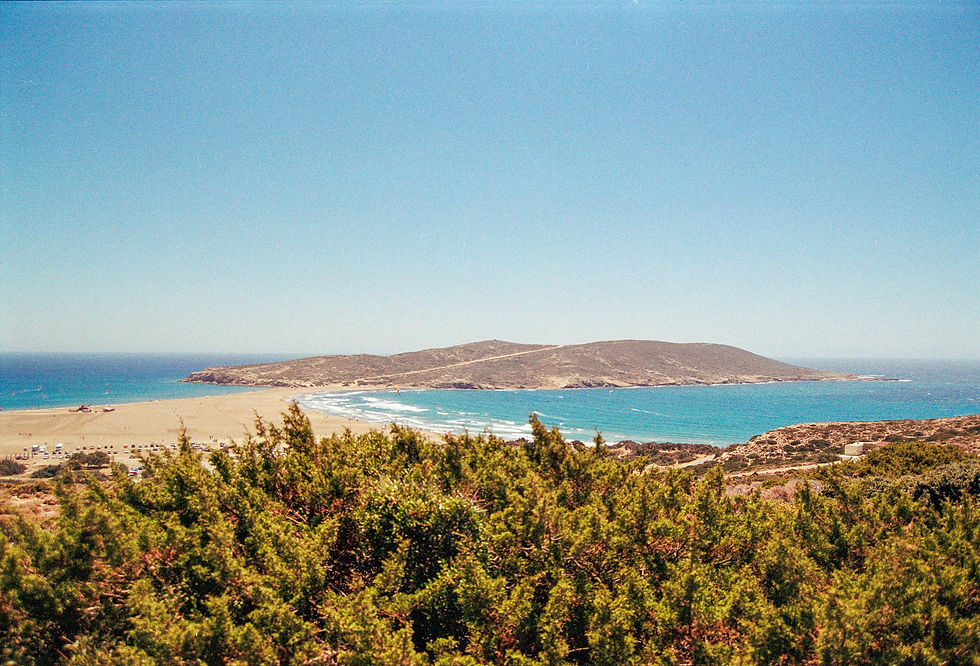Wildlife of Europe Series - Greece
- Richard

- May 3
- 4 min read
Greece, renowned for its ancient ruins and sun-drenched islands, is also a hidden gem for wildlife enthusiasts. With its rugged mountains, lush forests, wetlands, and more than 3,000 islands, Greece harbours an extraordinary diversity of animal life, including many species found nowhere else on Earth. This rich natural heritage is increasingly under the spotlight, both for its intrinsic value and the conservation challenges it faces. Thanks to robust support from the European Union, Greece is making significant strides in protecting its unique biodiversity for generations to come.
A Biodiversity Hotspot in Europe
Greece boasts one of the highest levels of biodiversity in Europe, with around 18% of the continent’s total fauna and more than 4,000 animal species that are endemic-meaning they exist only within Greek borders. This remarkable figure is due to the country’s varied landscapes, from alpine peaks to coastal lagoons, and its position as a crossroads between Europe, Asia, and Africa.

Iconic and Endemic Species
The Cretan Ibex (Kri-Kri)
Perhaps the most iconic of Greece’s endemic mammals is the Cretan ibex, or kri-kri (Capra aegagrus cretica), found only on the island of Crete and a few nearby islets. This agile wild goat, with its impressive horns and sure-footedness, is a symbol of Crete’s wild beauty. Once widespread, the kri-kri is now listed as vulnerable and survives in small, protected populations.
The Balkan Chamois
The Balkan chamois (Rupicapra rupicapra balcanica) is another cliff-dwelling ungulate unique to the region, thriving in the rocky highlands of northern Greece.

The Mediterranean Monk Seal
Greece’s coastal caves are home to the Mediterranean monk seal (Monachus monachus), one of the world’s rarest marine mammals. The largest breeding population is found on the island of Gyaros, but overall numbers remain critically low, with fewer than 600 individuals left in the wild.
Unique Birds
Greece is a haven for birdlife, with over 450 recorded species, including many migratory and endemic birds. The little owl (Athene noctua), long associated with Athena, the goddess of wisdom, is considered a national symbol. The critically endangered Egyptian vulture (Neophron percnopterus) and the rare Eleonora’s falcon (Falco eleonorae) are among the country’s avian treasures.
Endemic Freshwater Fish and Amphibians
Greece’s lakes and rivers are home to a host of endemic fish species, especially in isolated habitats like Lake Prespa. Some species are restricted to a single lake or stream, making them highly vulnerable to environmental changes. Example include unique species of Catfish, Loach and Trout.

Marine Life
Greek waters support several dolphin species, including the common dolphin (Delphinus delphis), bottlenose dolphin (Tursiops truncatus), and the elusive Cuvier’s beaked whale (Ziphius cavirostris). The loggerhead sea turtle (Caretta caretta) nests on Greek beaches, particularly in Zakynthos, Crete, and the Peloponnese.

Where to Witness Greek Wildlife
Dadia Forest: A sanctuary for birds of prey, including four vulture species.
Nestos Delta and Lake Kerkini: Wetlands teeming with otters, deer, wild boar, and over 300 bird species.
Prespa and Pindos National Parks: Strongholds for brown bears, Balkan lynx, and wild cats.
Greek Islands: Crete for kri-kri, Zakynthos for sea turtles, and Alonissos for monk seals.
Conservation Challenges
Despite its natural wealth, Greek wildlife faces significant threats: habitat destruction, climate change, pollution, overfishing, and unsustainable farming practices are putting pressure on many species, especially those with limited ranges. Endemic species, confined to specific mountains, lakes, or islands, are particularly at risk of extinction due to their small populations and specialized habitats.
The Role of the European Union in Conservation
The European Union plays a crucial role in supporting Greece’s conservation efforts:
Natura 2000 Network: Greece is a leading participant in the EU’s Natura 2000 network, which designates protected areas for the conservation of Europe’s most valuable and threatened species and habitats. Nearly 30% of Greece’s land and sea area is now under some form of protection, with a goal to reach at least 30% by 2030.
Key Biodiversity Areas (KBAs): In 2023, Greece became the first European country to formally recognize Key Biodiversity Areas in its national laws, ensuring that these globally important sites receive targeted protection and management.
EU Funding: More than €20 billion from EU regional and rural development funds are being invested in sustainable development models that integrate conservation with agriculture, tourism, and energy policy. These funds support research, habitat restoration, and the management of protected areas, particularly in biodiversity-rich regions like the Cyclades and Ionian Islands.

Implementation of EU Directives: Greece’s national biodiversity laws incorporate critical European legislation, such as the Wild Birds and Habitats Directives, providing a legal framework for species and habitat protection.
Collaborative Conservation in Action
Greek conservation NGOs, often in partnership with EU-backed programs, are actively involved in research, monitoring, and habitat restoration. Volunteer projects focus on protecting sea turtles, dolphins, and monk seals, while scientific studies help guide policy and management decisions. The EU’s LIFE program and Horizon grants further bolster these efforts, ensuring that Greece’s unique wildlife continues to thrive.
~
Greece’s wildlife is as rich and varied as its history, offering a sanctuary for creatures found nowhere else on the planet. While challenges remain, the combined efforts of local conservationists and robust EU support are paving the way for a sustainable future. Whether you’re exploring a mountain trail in Crete or watching dolphins off the Ionian coast, you’re witnessing the results of a nation-and a continent-committed to protecting its natural wonders.
🫒






Comments